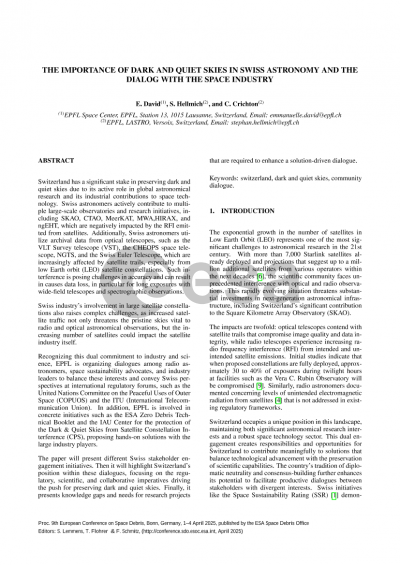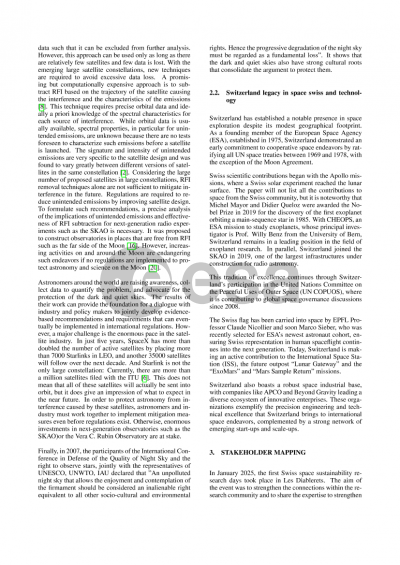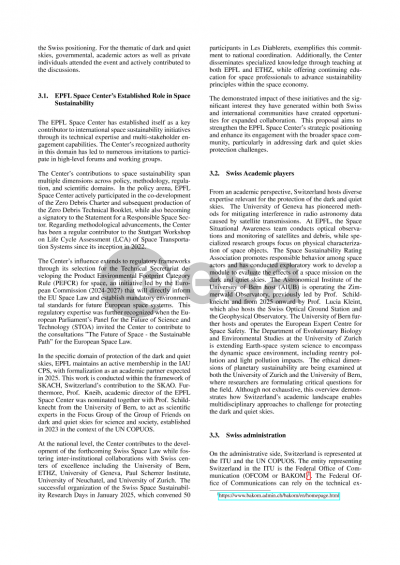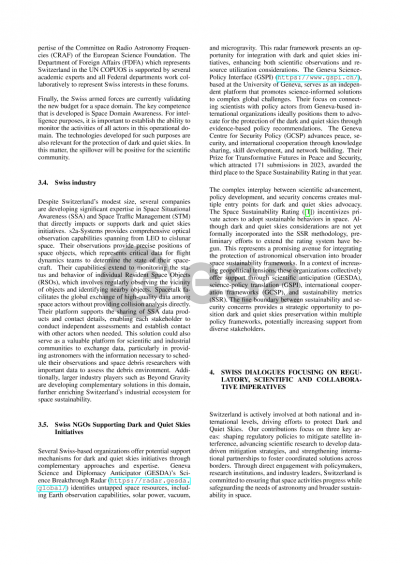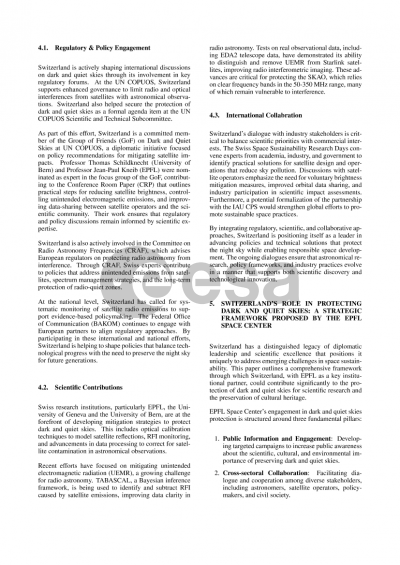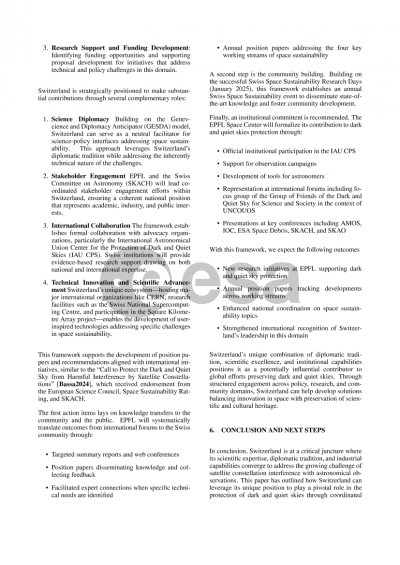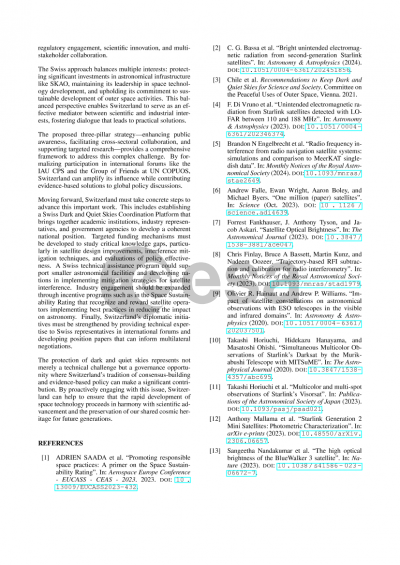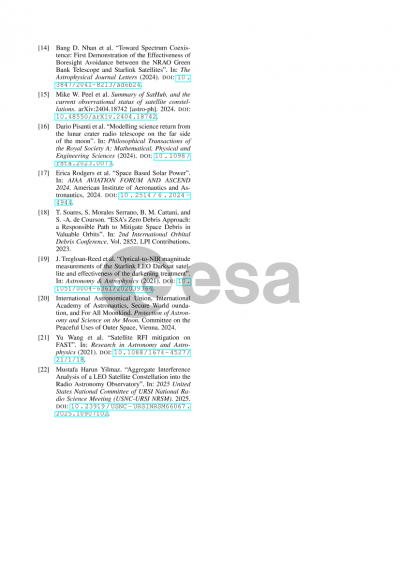Document details

Abstract
Switzerland has a significant stake in preserving dark and quiet skies due to its active role in global astronomical research and its industrial contributions to space technology. Swiss astronomers actively contribute to multiple large-scale observatories and research initiatives, including SKAO, CTAO, MeerKAT, MWA,HIRAX, and ngEHT, which are negatively impacted by the RFI emitted from satellites. Additionally, Swiss astronomers utilize archival data from optical telescopes, such as the VLT Survey telescope (VST), the CHEOPS space telescope, NGTS, and the Swiss Euler Telescope, which are increasingly affected by visible light reflections and satellite trails from low Earth orbit (LEO) satellite constellations. These visible trails can interfere with long-exposure observations, posing challenges to data accuracy in optical and infrared astronomy.
Swiss industry’s involvement in large satellite constellations also raises complex challenges, as increased satellite traffic not only threatens the pristine skies vital to both radio and optical
astronomical observations, but the overcrowding of constellations could impact the satellite industry itself.
Recognizing this dual commitment to industry and science, EPFL has been organizing dialogues among radio astronomers, space sustainability advocates, and industry leaders to balance these interests and convey Swiss perspectives at international regulatory forums, such as the United Nations Committee on the Peaceful Uses of Outer Space (COPUOS) and the ITU (International Telecommunication Union). In addition, EPFL is involved in concrete initiatives such as the ESA Zero Debris Technical Booklet and the IAU Center for the protection of the Dark & Quiet Skies, proposing hands-on solutions with the large industry players.
The paper will present different Swiss stakeholder engagement initiatives. Then it will highlight Switzerland's position within these dialogues, focusing on the regulatory, scientific, and collaborative imperatives driving the push for preserving dark and quiet skies. Finally it presents knowledge gaps and needs for research projects enhancing a solution-driven dialogue.
Preview
